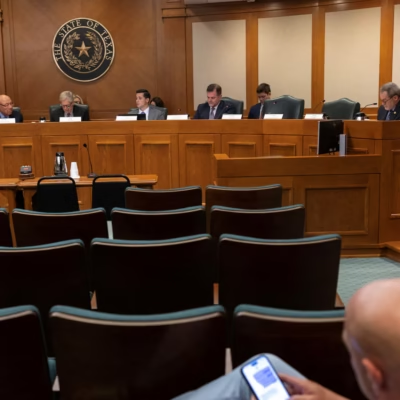The Texas redistricting battle has taken center stage in national discussions around voting rights, fair elections, and political power. But the controversy isn’t just about Texas anymore. What started as a legal and political conflict within the Lone Star State is now influencing several other states across the country.
In this article, we explore which states are being impacted by Texas’ redistricting battle, why this issue matters beyond Texas, and what it means for future elections in the United States.
Understanding the Texas Redistricting Battle
Every 10 years, after the U.S. Census, states redraw their congressional and legislative districts to reflect population changes. In Texas, this process has become highly controversial due to accusations of racial gerrymandering and political manipulation.
In 2021, Texas lawmakers, led by the Republican majority, approved new district maps that critics argue dilute the voting power of communities of color—especially Latino and Black voters. The state gained two new congressional seats due to population growth, but voting rights groups argue the maps favor white voters and do not represent the state’s increasing diversity.
Legal battles quickly followed, with civil rights groups and the U.S. Department of Justice filing lawsuits against the state. As of 2025, these cases are still being argued in court, and the outcomes could set powerful precedents.
Why This Legal Fight Matters Beyond Texas
The Texas redistricting battle is not happening in a vacuum. It is being watched closely by courts, lawmakers, and activists across the nation. Here’s why:
- Texas is a national trendsetter. Decisions made in Texas can influence how other states approach redistricting.
- Federal court rulings on Texas maps may apply elsewhere. If the courts determine that Texas’ maps violate the Voting Rights Act, similar maps in other states could also face legal challenges.
- Political control is at stake. How district lines are drawn can decide which party controls the U.S. House of Representatives.
States Being Impacted by Texas’ Redistricting Battle

Several states are directly or indirectly impacted by the ongoing battle in Texas. These include states that are also facing redistricting lawsuits, have similar demographic trends, or are closely watching the legal outcomes to guide their own redistricting strategies.
1. Georgia
Georgia, like Texas, has experienced rapid growth in communities of color. The state’s redistricting maps, approved by a Republican-led legislature, are facing lawsuits over alleged racial gerrymandering. Legal arguments in Georgia echo those in Texas—specifically around the dilution of Black and Latino voting strength.
Federal judges in Georgia have referred to the Texas case in some of their rulings, highlighting how closely linked these battles have become.
2. Alabama
Alabama was at the center of a major Supreme Court ruling in 2023 (Allen v. Milligan), which found that the state’s congressional map likely violated the Voting Rights Act by underrepresenting Black voters. That ruling has already had a ripple effect, and Texas’ case could either strengthen or challenge its legal basis.
If courts determine that Texas also violated the Act, it could reinforce the idea that maps must reflect the racial makeup of the population, influencing redistricting in Alabama and similar states.
3. Louisiana
Louisiana’s redistricting map is under scrutiny for allegedly failing to give Black voters a fair chance to elect candidates of their choice. The case has strong parallels to Texas. Both states have significant minority populations and Republican-controlled legislatures that drew maps criticized for racial bias.
The legal outcomes in Texas could offer support or undermine the cases being made in Louisiana courts.
4. North Carolina
North Carolina’s redistricting has long been a legal battlefield. The state’s courts recently flipped control to conservatives, and now past rulings that struck down gerrymandered maps could be reversed.
While North Carolina’s fight isn’t identical to Texas’, the strategies used by lawyers and the precedent set in Texas could influence how courts in North Carolina interpret redistricting laws in the future.
5. Florida
Florida passed new congressional maps under Governor Ron DeSantis’ direction that reduced the number of majority-Black districts. Voting rights advocates immediately filed lawsuits, drawing national attention.
Texas’ legal battle could influence how Florida’s maps are judged—especially if courts establish clearer guidelines for when minority representation is protected by the Voting Rights Act.
6. Arizona
Though controlled by Democrats in recent years, Arizona’s redistricting process is still under close watch. Its independent redistricting commission helps reduce partisan bias, but challenges remain.
If the courts rule against Texas, it could push Arizona and other states to be more careful in how they draw lines, especially when it comes to representing fast-growing Latino populations.
Shared Themes Across These States
Despite differences in geography and politics, the states impacted by the Texas redistricting battle share several key themes:
- Demographic Change: Many of these states have seen rapid growth in Latino, Black, and Asian populations.
- Partisan Interests: In most cases, the party in power draws maps that help them stay in power.
- Legal Battles: Courts are being asked to decide how much race can or should be considered when drawing district lines.
The Role of the Supreme Court
The U.S. Supreme Court has played a major role in shaping redistricting laws. In recent years, the Court has limited the scope of the Voting Rights Act, especially after the 2013 Shelby County v. Holder decision, which removed the requirement that certain states (like Texas) get federal approval before changing voting laws.
But more recently, in cases like Allen v. Milligan (Alabama), the Court has shown a willingness to uphold certain protections for minority voters. If Texas’ case reaches the Supreme Court, it could lead to a landmark decision that affects redistricting nationwide.
Impacts on the 2026 and 2028 Elections
While the legal process can be slow, the results of the Texas redistricting battle could reshape future elections:
- Congressional Power: Changing the district maps can affect which party controls the U.S. House of Representatives.
- Voter Turnout: If voters feel their communities are being fairly represented, they may be more likely to vote.
- Litigation Surge: A ruling against Texas could lead to a wave of new lawsuits in other states with controversial maps.
Voting Rights Advocates Weigh In
Civil rights organizations like the NAACP Legal Defense Fund, Mexican American Legal Defense and Educational Fund (MALDEF), and the ACLU are deeply involved in the Texas case. They argue that the current maps dilute minority voting power and violate both the Voting Rights Act and the U.S. Constitution.
These groups are also active in other states and hope that a strong ruling against Texas could lead to broader reforms nationwide.
Conclusion: Texas Is Just the Beginning
The Texas redistricting battle is more than a local political fight—it’s a defining moment for democracy in the United States. From Georgia to Arizona, states are watching closely because the outcome will influence how voting power is distributed for years to come.
With court decisions still pending and potential appeals to the Supreme Court on the horizon, the story is far from over. But one thing is clear: the battle lines drawn in Texas will echo across the nation.
Do Follow USA Glory On Instagram
Read Next – Marsha Blackburn Tennessee Governor: Senator Enters 2026 Race with Bold Vision






